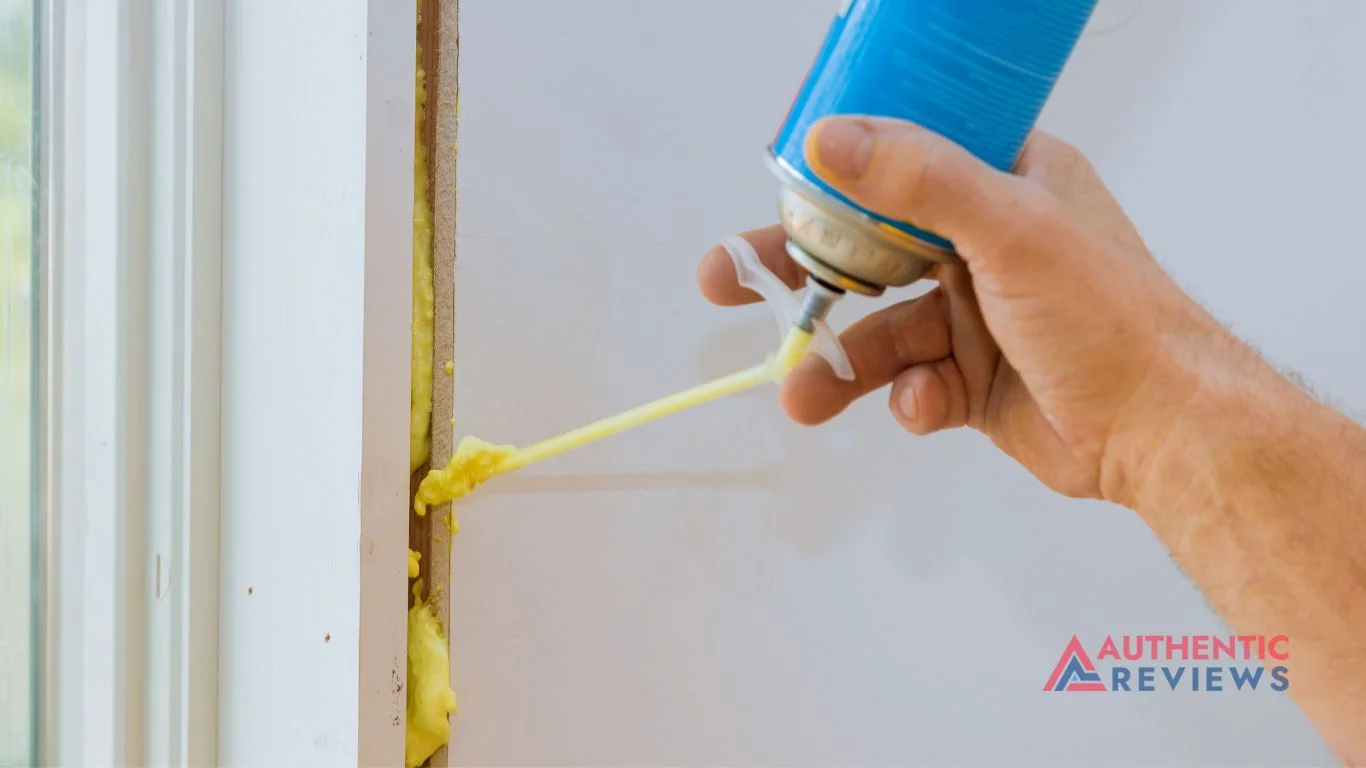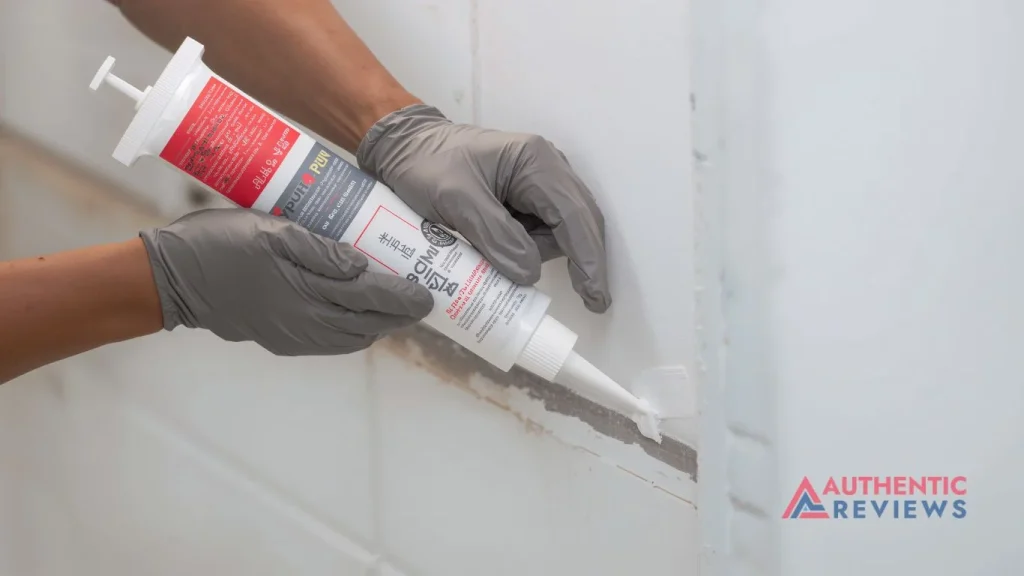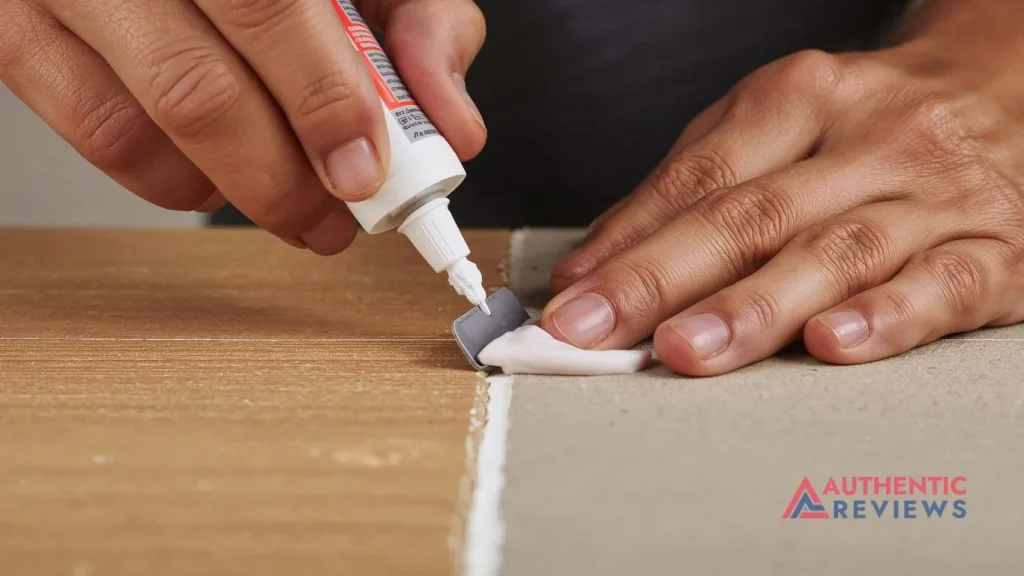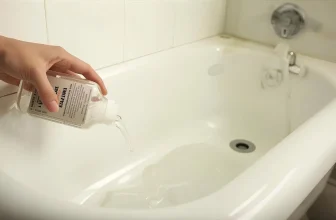How to Use Caulking without a Gun for Your Next DIY Project

The gaps and joints between windows, doors, and other surfaces can be a source of headaches for homeowners. These gaps allow drafts to enter, water to leak through, and pests to enter the house. Sealing these gaps is a necessary step in home repairs and improvement.
Traditionally, caulking guns have been the go-to tool for this task. However, not everyone may have access to a caulking gun or feel comfortable using one. In this case, knowing how to use caulking without a gun can be useful.
Here, we will discuss alternative methods for applying caulking without a gun. We will also provide tips and tricks for achieving a clean and professional finish.
Understanding Caulk and Its Uses
Let’s begin by understanding what caulk is and when it should be used.
What is Caulk?
Caulk is a material made of a pliable, waterproof substance that is used to seal gaps and joints. It is available in different forms, such as paste, squeeze tubes, and tape. The liquid version of caulk is typically applied using a caulking gun. When you open a tube of caulk, the liquid inside is usually a thick, gooey substance. It hardens when exposed to air, creating a waterproof seal. The caulking gun makes it easier to control the flow and distribution of caulk.
When to Use Caulk?
Caulk is commonly used for filling gaps and joints between surfaces. This can include sealing gaps around windows and doors, filling cracks in walls or floors, and even repairing leaks in plumbing fixtures. It is also used for cosmetic purposes to create a seamless look between different building materials.
With time, the trims and seals may shrink or crack, creating gaps that must be filled. This is especially important for maintaining the energy efficiency of a home. Other common uses for caulk include weatherproofing and preventing pest infestations. Anywhere a gap needs to be sealed, caulk can come in handy.

Types of Caulk You Can Apply Without a Gun
Luckily, there are a few types of caulk that can be applied without the use of a caulking gun. Let’s take a look at two common options.
Latex caulk
Latex caulk is one of the most popular and versatile caulking options. This type of caulk is made from synthetic polymers and has a water base. It is easy to apply and clean up, making it a great option for beginners. Latex caulk is also flexible, which allows it to expand and contract with temperature changes. Normally, it is used for indoor repairs and sealing gaps between nonporous surfaces.
Silicone caulk
Silicone caulk, on the other hand, is made from a mix of silicone, rubber, and plastic. It has a clear finish and is highly resistant to water and UV rays. This makes it ideal for outdoor use or in areas where there may be exposure to moisture. Silicone caulk is also very durable and lasts up to 20 years. However, it is not as easy to apply and clean up as latex caulk. Also, it is best to use a caulking gun for silicone caulk as it can be too thick to squeeze out by hand.
Other alternatives
Apart from latex and silicone caulk, some other caulking options, such as tape and rope caulk, don’t require a gun. Tape caulk is often used for temporary fixes or small repairs, while rope caulk is ideal for sealing gaps between stationary objects. These options may not be as long-lasting or versatile as latex and silicone caulk, but they are handy for quick fixes.
How to Use Caulking Without a Gun?
Now that we have a basic understanding of caulk and its different types let’s dive into how to use caulk without gun.
Preparation
Before applying caulk, it is important to prepare the area properly. This will ensure maximum adhesion and a clean finish. Start by cleaning the surface thoroughly with soap and water or a degreasing cleaner. This will remove any dirt, grime, or old caulk that may affect the new caulk’s performance. Use a scraper or putty knife to remove any loose debris.
Next, choose the right type of caulk for the job. As mentioned earlier, latex and silicone caulk have different properties and are suitable for different applications.
Application techniques
You can use a few techniques to apply caulk without gun. Here are three commonly used methods.
Using squeeze tube caulk
Squeeze tube caulk is a popular choice for those who do not have access to a caulking gun. It comes in a toothpaste-like tube and can be easily squeezed out using your hands. To use this method, simply cut the tip of the nozzle at an angle to create an opening. Then, place the nozzle against the gap or joint and squeeze firmly while moving the tube along the gap. Use your finger or a putty knife to smooth out the caulk and create a clean finish.
Applying caulk with a finger
This method involves using your index finger to apply and shape the caulk. It may seem messy, but it can be an effective way to get into tight corners and ensure even distribution of caulk. Here’s how to do it:
- Squeeze a small amount of caulk onto your finger or a putty knife.
- Place the tip of your finger against the desired gap and use gentle pressure to push the caulk into place.
- Use your finger or a putty knife to smooth the excess caulk and create a neat finish.
- Wipe off any excess caulk with a damp cloth.
Utilizing tools for application
If you have a flat-edged tool like a screwdriver or hammer handle, you can use it to apply caulk like your finger. This method allows for more precision and control over the distribution of caulk. Simply place the tip of the tool against the gap and push the caulk into place, using the tool to smooth out any excess.

Post-Application Tips
Once you have applied the caulk, you can do a few things to ensure a neat finish and long-lasting results.
Here are some tips to keep in mind:
- Wet your finger or tool with water before smoothing out the caulk. This will prevent it from sticking and create a smoother finish.
- Use painter’s tape to mask off the gap’s edges before applying caulk. This will help create straight lines and minimize clean-up.
- If you make a mistake, don’t worry! You can wipe the caulk off with a damp cloth and start over.
Product Recommendations:
Now that you know how to apply caulk without a gun, here is one product recommendation that you’ll find useful.
Simple seal
Simple Seal is a no-gun-needed caulking solution with an easy-to-use squeeze tube. It is an all-purpose caulk that can be used for various indoor and outdoor applications. It is also paintable, water-resistant, and offers a durable seal. Simple Seal is perfect for those new to caulking or needing a quick fix.
On the downside, it may not be as long-lasting or flexible as other types of caulk, but for small repairs and projects, it is a convenient option.
Common Mistakes and How to Avoid Them
As with any DIY project, common mistakes can happen when using caulk without gun. Here are a few to watch out for and how to avoid them:
- Not properly preparing the area before application can lead to poor adhesion and a messy finish. Clean the surface thoroughly and choose the right caulk for the job.
- Squeezing out too much caulk at once can make it difficult to control and create a messy finish. Start with a small amount and add more as needed.
- Applying too much pressure when smoothing the caulk can push it out of the gap and create an uneven distribution. Use gentle pressure and work in small sections for best results.
- Not wiping off excess caulk can leave behind a messy finish. Always have a damp cloth to clean up any mistakes or drips.
- Not allowing enough time for the caulk to dry can result in a weak seal and potential cracking or breaking. Always check the manufacturer’s recommendations for drying times and avoid using the sealed area until fully cured.
Frequently Asked Questions
A caulking gun is not necessary for all types of caulk. You can use alternative caulk options such as squeeze tube, tape, or rope caulk. You can also apply it using your finger or a flat-edged tool.
Sealant and caulk are often used interchangeably, but they differ slightly. Sealant is typically used to fill larger gaps and provide a waterproof seal. Caulk is used for smaller gaps and joints, providing a seal and an adhesive.
Caulk is a fast-drying product, but the drying time can vary depending on the type of caulk and environmental conditions. Silicon caulk can take 30 minutes to an hour to dry, while acrylic caulk can take up to 24 hours.
Yes, heat can speed up the drying time of caulk. However, too much heat can also cause the caulk to dry out too quickly, affecting its adhesion and durability.
Caulk will eventually fully harden and create a strong seal. However, the caulk may take up to 7-14 days to reach its maximum strength and durability. Avoid using the sealed area until the caulk has fully cured. Overall, caulk is a versatile and affordable solution for many home repairs and projects.
Conclusion
Caulking without a gun is a simple and effective method for various DIY projects. Knowing how to use caulking without a gun can save time and money on your home improvement projects.
Always clean the surface thoroughly before applying caulking, and use a steady hand while dispensing the product. If you are unsure about your skills, you can practice on a scrap piece of material before attempting it on your actual project.
With the right technique and patience, anyone can use caulking without gun to seal gaps, cracks, and joints. So, next time you have a home improvement project, don’t hesitate to try this method and see the results for yourself.





